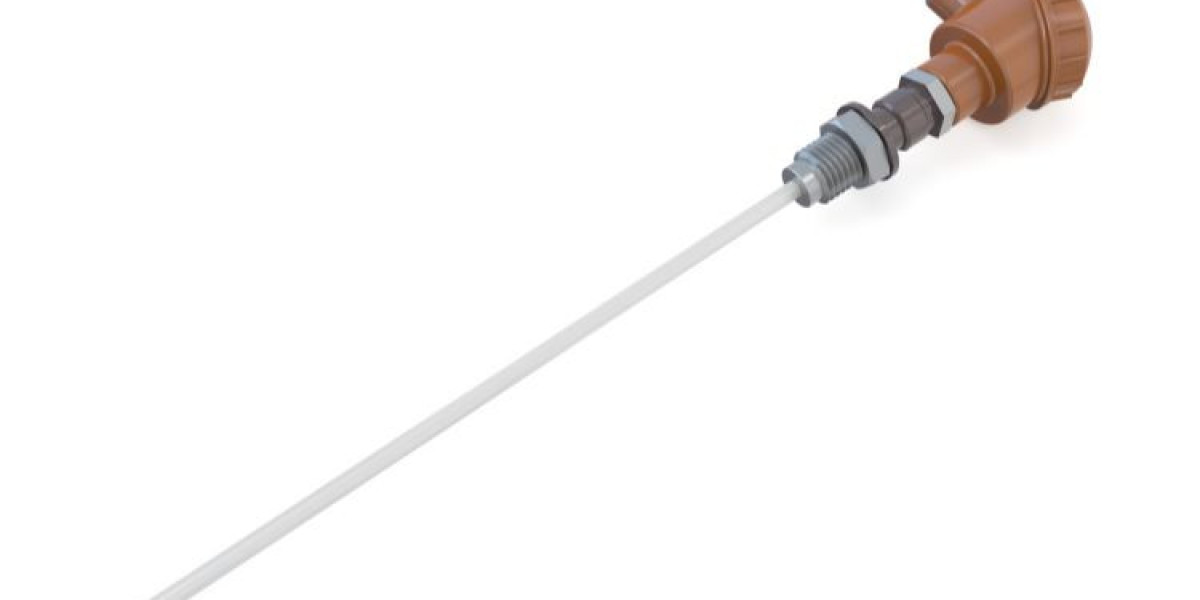The global thermocouple market size is expected to grow in the forecast period of 2024-2032 at a CAGR of 4.80%. This impressive growth reflects the indispensable role that thermocouples play in various industries where precise temperature measurement is critical. From manufacturing and automotive to aerospace and food processing, thermocouples are trusted temperature sensors that help ensure quality, safety, and efficiency.
In this blog post, we'll delve into the world of thermocouples, providing a comprehensive overview of what they are and how they work. Whether you're an engineer, a technician, a student, or simply someone curious about the inner workings of these devices, this guide will serve as a valuable resource.
What Are Thermocouples?
To start our exploration, let's first define what thermocouples are. At their core, thermocouples are temperature sensors that generate an electrical voltage proportional to the temperature difference between their two junctions. This phenomenon, known as the Seebeck effect, forms the foundation of thermocouple operation.
Historical Background of Thermocouples
Thermocouples have a rich history dating back to the early 19th century when Danish physicist Thomas Seebeck first discovered the phenomenon that bears his name. Seebeck noticed that when two different metals were joined at their ends and subjected to a temperature gradient, an electric current was produced. This discovery laid the groundwork for the development of modern thermocouples.
Common Materials Used in Thermocouples
Thermocouples are made from various combinations of metals and alloys, each with unique properties and temperature ranges. Some common materials used in thermocouples include:
Type K: Made from Nickel-Chromium (NiCr) and Nickel-Aluminum (NiAl), Type K thermocouples are widely used due to their broad temperature range and stability.
Type J: Composed of Iron (Fe) and Constantan (CuNi), Type J thermocouples are suitable for lower-temperature applications and are often used in industrial settings.
Type T: Made from Copper (Cu) and Constantan, Type T thermocouples are well-suited for cryogenic and subzero temperature measurements.
Type E: Comprising Nickel-Chromium and Constantan, Type E thermocouples offer high accuracy and are commonly used in research and laboratory settings.
Now that we've covered the basics let's move on to the fundamental principles behind thermocouple operation.
How Do Thermocouples Work?
Thermocouples operate based on the principles of thermoelectricity and the Seebeck effect. Understanding these concepts is crucial to comprehending how thermocouples function.
The Principle of the Seebeck Effect
The Seebeck effect describes the generation of an electromotive force (EMF) or voltage when two dissimilar metals are connected at two different temperatures. This voltage is directly proportional to the temperature difference between the two junctions and is the basis for temperature measurement in thermocouples.
The Thermoelectric Circuit: Understanding the Basics
To create a thermoelectric circuit, two dissimilar metal wires are joined at one end, forming what is called the "measurement junction." The other ends are connected to a voltmeter or other measuring equipment, forming the "reference junction." When the measurement junction is exposed to a temperature gradient (hotter or colder environment), it generates a voltage that can be measured and correlated to the temperature.
Voltage Generation in Thermocouples
The voltage generated by a thermocouple is the result of the difference in electron energies at the two junctions. Each type of thermocouple has a unique voltage-to-temperature relationship, which is characterized by its thermoelectric properties. This relationship is defined by international standards and allows for precise temperature measurement.
The Role of Temperature Difference in Thermocouple Operation
It's important to note that thermocouples measure temperature differences, not absolute temperatures. This means that they provide a temperature reading relative to a reference point, often referred to as the "cold junction." To obtain accurate temperature measurements, the temperature at the reference junction must be known and compensated for.
Types of Thermocouples
Thermocouples come in various types, each designed for specific temperature ranges and applications. Let's explore some of the most common types and their characteristics.
Overview of Different Thermocouple Types
Type K: Type K thermocouples are among the most popular due to their wide temperature range (-270°C to +1372°C), making them suitable for a wide range of applications.
Type J: Type J thermocouples are best suited for lower-temperature measurements, with a range of -210°C to +760°C. They are often used in industrial processes.
Type T: Type T thermocouples excel in cryogenic applications, with a range of -270°C to +400°C. Their high sensitivity to temperature changes makes them ideal for extreme cold environments.
Type E: Type E thermocouples offer excellent accuracy and have a temperature range of -270°C to +1000°C. They are commonly used in research and scientific laboratories.
Considerations for Selecting the Right Thermocouple Type
Choosing the appropriate thermocouple type for a specific application is crucial to ensure accurate and reliable temperature measurements. Factors to consider when selecting a thermocouple type include:
- Temperature range required for the application.
- Chemical compatibility with the environment.
- Accuracy and precision requirements.
- Cost considerations.
Advantages and Disadvantages of Thermocouples
Thermocouples offer several advantages that make them a preferred choice in temperature measurement, but they also come with some limitations.
Advantages
Wide Temperature Range: Thermocouples can measure a broad range of temperatures, from cryogenic to extremely high.
Durability: They are robust and can withstand harsh industrial environments.
Affordability: Thermocouples are cost-effective compared to some other temperature sensors.
Limitations
Calibration: Thermocouples require regular calibration to maintain accuracy.
Accuracy: While they are generally accurate, the precision can vary depending on the type and application.
Cold Junction Compensation: The need for compensating for the reference junction temperature adds complexity to measurements.
Common Applications of Thermocouples
Thermocouples find widespread use across various industries, each relying on them for temperature measurement and control. Let's explore some common applications.
Overview of Industries and Processes
Manufacturing: Thermocouples are used in manufacturing processes to monitor and control temperatures in furnaces, ovens, and kilns.
Automotive: They are essential for engine temperature monitoring and exhaust gas analysis.
Aerospace: Thermocouples are crucial for measuring temperatures in aircraft engines and spacecraft.
Food Processing: They ensure safe cooking and pasteurization temperatures in the food industry.
Examples of Specific Applications
Steel Industry: Thermocouples are used to monitor and control temperatures in steel production, ensuring product quality.
Healthcare: In medical devices such as thermometers, thermocouples help accurately measure body temperature.
Energy Generation: They play a vital role in monitoring and controlling temperatures in power plants, helping optimize energy production.
Maintenance and Calibration
To ensure the reliability and accuracy of thermocouple measurements, proper maintenance and periodic calibration are essential.
Importance of Regular Calibration
Calibration ensures that a thermocouple provides accurate temperature readings. Calibration intervals depend on factors such as the type of thermocouple, the application, and industry standards.
Best Practices for Maintaining Thermocouples
Inspect Regularly: Visually inspect thermocouples for damage or wear, and replace them if necessary.
Protect From Contamination: Keep thermocouples clean and free from contaminants, which can affect accuracy.
Calibration Services: Utilize professional calibration services to ensure precise measurements.
Troubleshooting Common Issues
Common issues with thermocouples include drift, signal noise, and inaccurate readings. Understanding these problems and their potential causes can help troubleshoot and resolve issues effectively.









